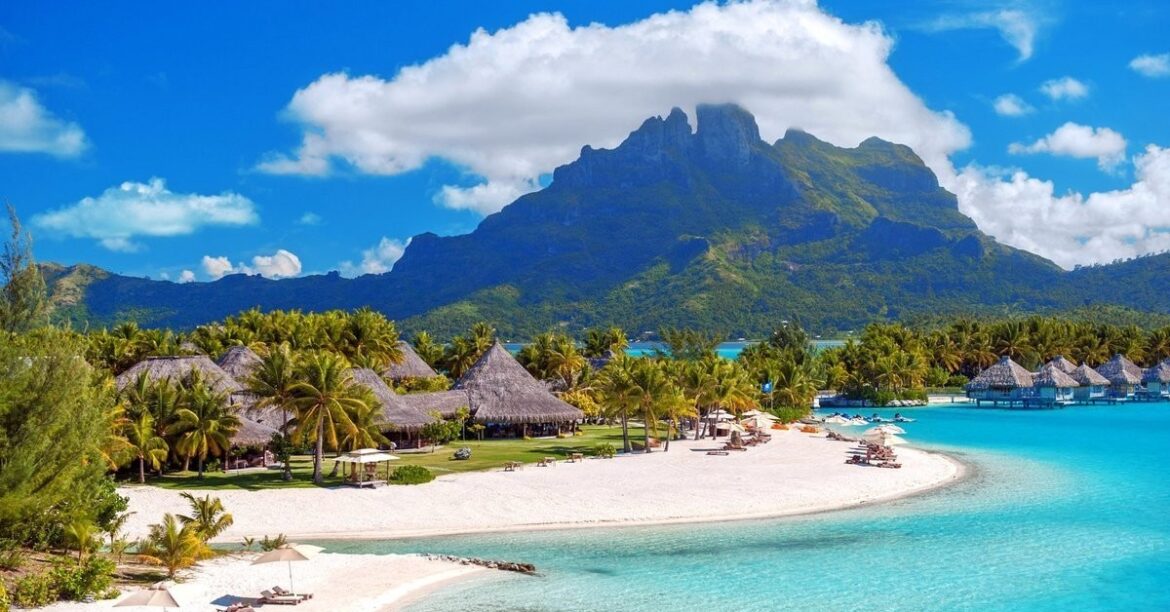Scattered across the vast expanse of the Pacific Ocean, Polynesia is a region that embodies the idea of paradise. With its turquoise lagoons, volcanic peaks, coral reefs, and deeply spiritual culture, this constellation of islands forms one of the most enchanting destinations on Earth. Stretching from Hawaii in the north to New Zealand in the southwest and Easter Island in the southeast, Polynesia offers an incredible diversity of experiences — from adventure and exploration to serenity and tradition.
The Islands of the Endless Blue
Polynesia is not a single country but a vast triangle of islands — thousands of them — each with its own unique charm. Among the most famous are French Polynesia (home to Tahiti, Bora Bora, and Moorea), Samoa, Tonga, the Cook Islands, Hawaii, and Easter Island (Rapa Nui). Despite their geographical spread, these islands share common cultural roots: language, mythology, and a deep connection to the ocean.
Travelers often begin their journey in Tahiti, the “Queen of the Pacific,” where black-sand beaches meet lush mountains and waterfalls. From here, island-hopping becomes a dream adventure — each destination more idyllic than the last.
French Polynesia: The Crown Jewel
French Polynesia is the heart of tourism in the region. Its most famous island, Bora Bora, is often described as the most beautiful island in the world. Surrounded by a turquoise lagoon and protected by a barrier reef, Bora Bora’s overwater bungalows have become a global symbol of luxury. Yet beyond the resorts lies a world of adventure: snorkeling with manta rays, diving among coral gardens, hiking Mount Otemanu, or simply sailing across the lagoon as the sun sets behind volcanic peaks.
Nearby Moorea is a quieter alternative, with dramatic green mountains, pineapple fields, and a strong local culture. It’s ideal for travelers who want a balance between comfort and authenticity.
The Tuamotu Archipelago, a chain of coral atolls, offers some of the best diving in the world, particularly around Rangiroa and Fakarava, where the waters teem with sharks, dolphins, and schools of colorful fish.
Samoa and Tonga: The Soul of Polynesia
While French Polynesia dazzles with its luxury, Samoa and Tonga preserve the essence of traditional Polynesian life. In Samoa, family and faith are central to the culture, and visitors are welcomed with open arms. The capital, Apia, is charming and laid-back, while the island of Upolu offers stunning natural attractions — from cascading waterfalls like To Sua Ocean Trench, a natural swimming hole in a volcanic crater, to palm-fringed beaches that feel far from the modern world.
In Tonga, the “Friendly Islands,” travelers can experience something rare: swimming with humpback whales. Every year between July and October, these gentle giants migrate through Tongan waters to breed and nurse their young — an awe-inspiring experience that few other places in the world offer.
Hawaii: Nature and Modern Comfort
To the north, Hawaii represents another side of Polynesia — a fusion of ancient tradition and modern life. Here, visitors can surf world-class waves on Oahu’s North Shore, explore volcanic landscapes on the Big Island, or wander through the lush valleys and cliffs of Kauai. Despite its popularity, Hawaiian culture remains alive through hula, chants, and the spirit of aloha — a philosophy of love, respect, and harmony that defines life across Polynesia.
Easter Island: The Mystery of Rapa Nui
At the southeastern edge of the Polynesian triangle lies Easter Island, or Rapa Nui, one of the most mysterious and remote inhabited places on Earth. Its giant stone statues, the moai, stand as silent guardians of an ancient civilization that once thrived in isolation. Travelers can explore archaeological sites, volcanic craters, and windswept coastlines, while also learning from locals who proudly preserve their Polynesian heritage and language.
Nature, Ocean, and Spirit
Across Polynesia, the ocean is not just a geographical feature — it is the heart of life and culture. For centuries, Polynesians were master navigators who read the stars, winds, and waves to voyage across thousands of miles of open sea. Today, that same spirit of exploration lives on in the region’s tourism: travelers are encouraged not just to visit, but to connect deeply with the environment and the people.
Sustainability is becoming a growing focus, as many islands seek to protect fragile coral reefs and traditional ways of life from the pressures of modern tourism. Eco-lodges, community-based experiences, and marine conservation tours are on the rise, offering travelers a chance to contribute positively to the islands they visit.
When to Visit
The best time to visit Polynesia depends on the region, but generally, May to October offers pleasant weather with less rain and humidity. The wet season, from November to April, brings lush landscapes and fewer crowds, though some islands can experience cyclones during this period.
A Journey to the Heart of the Pacific
Polynesia is more than a destination — it’s a feeling. It’s the soft sound of waves against coral, the scent of frangipani flowers in the evening air, and the warmth of a people whose traditions stretch back thousands of years. Whether you’re gazing at the moai of Rapa Nui, diving among sharks in Rangiroa, hiking a volcanic peak in Hawaii, or sharing a meal with a Samoan family, you’ll discover that Polynesia’s greatest beauty lies not just in its landscapes, but in its soul.
To visit Polynesia is to step into a living legend — one written by the ocean, shaped by the winds, and carried by the stars.


